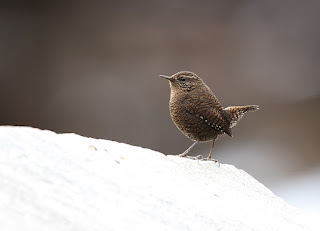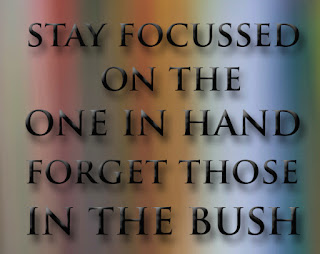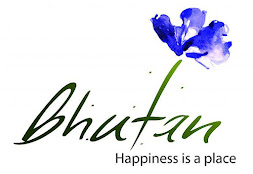For the past close to two months I have been unfailing in my chase of a pint-sized bird called Winter Wren (Troglodytes hiemalis) – every day: morning afternoon and evening. That is close to 200 hours of effort dedicated to one single bird! Regardless, all my efforts to date did not result in an image that I can claim to be, what I call, a “KEEPER”. I shot hundreds of images of the bird – all of them were consigned to their burial ground - the Trashcan.
The problem is the bird's foraging/feeding ground and the preening/frolicking perch. The place where it forages and feeds is a messy, slushy drainage that is clustered with dried branches and twigs. It feeds in this particular area every day. But photographing the bird in this feeding/foraging area is impossible – it is terribly crowded and impossible to separate the bird from the clutter around it.
Once it is done with its momentary feeding, the bird will unfailingly run off to fool around on/in a pile of white/grey colored splintered boulders. This is where I try to catch it – when it begins to display its dainty pretenses. Unfortunately, the boulders being white/grey in color, they come off all washed out, even if the bird is tack-sharp. This pile of boulders is located at a suspended construction site.
I am faced with an impossible situation – a perch that does not work and a feeding ground that is an impossibility. How is a man supposed to photograph a bird under such hopeless conditions? Only good thing is that the bird visits these two places without fail – day after day.
Then two weeks back I decided that to retrieve the situation I needed to give nature a helping hand. I gathered up a number of differently sized and colored wood pieces and arranged them haphazardly on top, and into, the cavities of the rock pile. The idea and the hope behind such an endeavor is that the bird would eventually decide to perch on one of these wood pieces – and not on the boulders. When it does, I will finally be able to acquire an image of my liking - with a pleasing wooden perch!
Well, the invitation has been sent out to the dainty little fellow - now all that I can do is WAIT … AND PRAY AND PRAY!
The trick worked – yesterday afternoon it perched on one of my wood pieces - I could finally nail the frisky fellow! But it still took me close to two weeks after the innovation, to get the following image – that is very close to what I consider a “KEEPER”.
For the record, I had to shift and rearrange the wooden pieces every day because the light source in the morning is from the East and in the evening it is from the West. While doing so, I have to be mindful about the background – the bird should not be projected against the white of the buildings surrounding the location. I had to make sure that the background is not too blue or green or have large voluminous objects that will show up as dark obtrusive hindrance to the overall image. As you can see in all my images, I like to have my background buttery smooth.
ENJOY! ….. and remember you have to keep at it – until you get it right – No “it is OK” attitude!





































